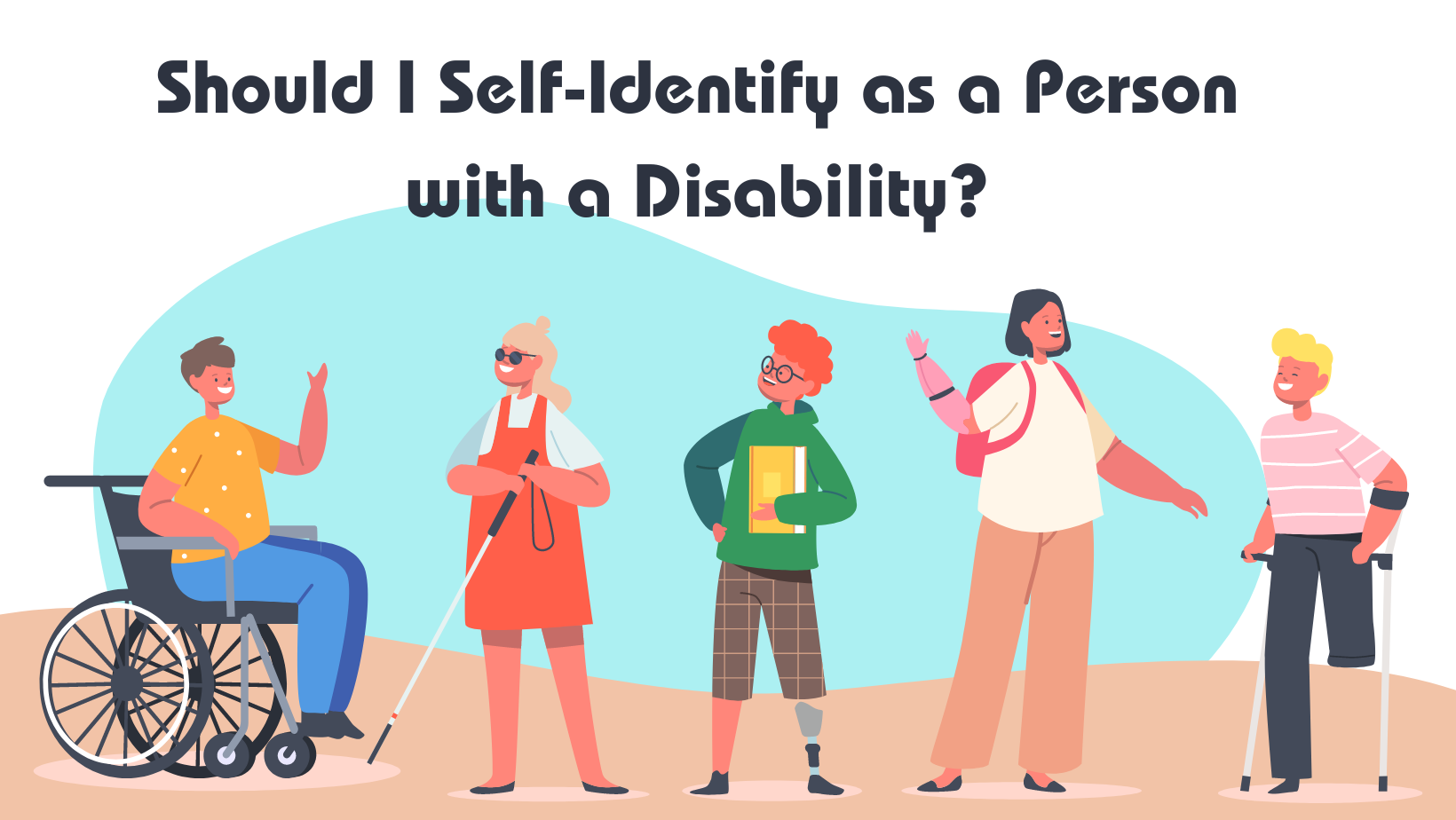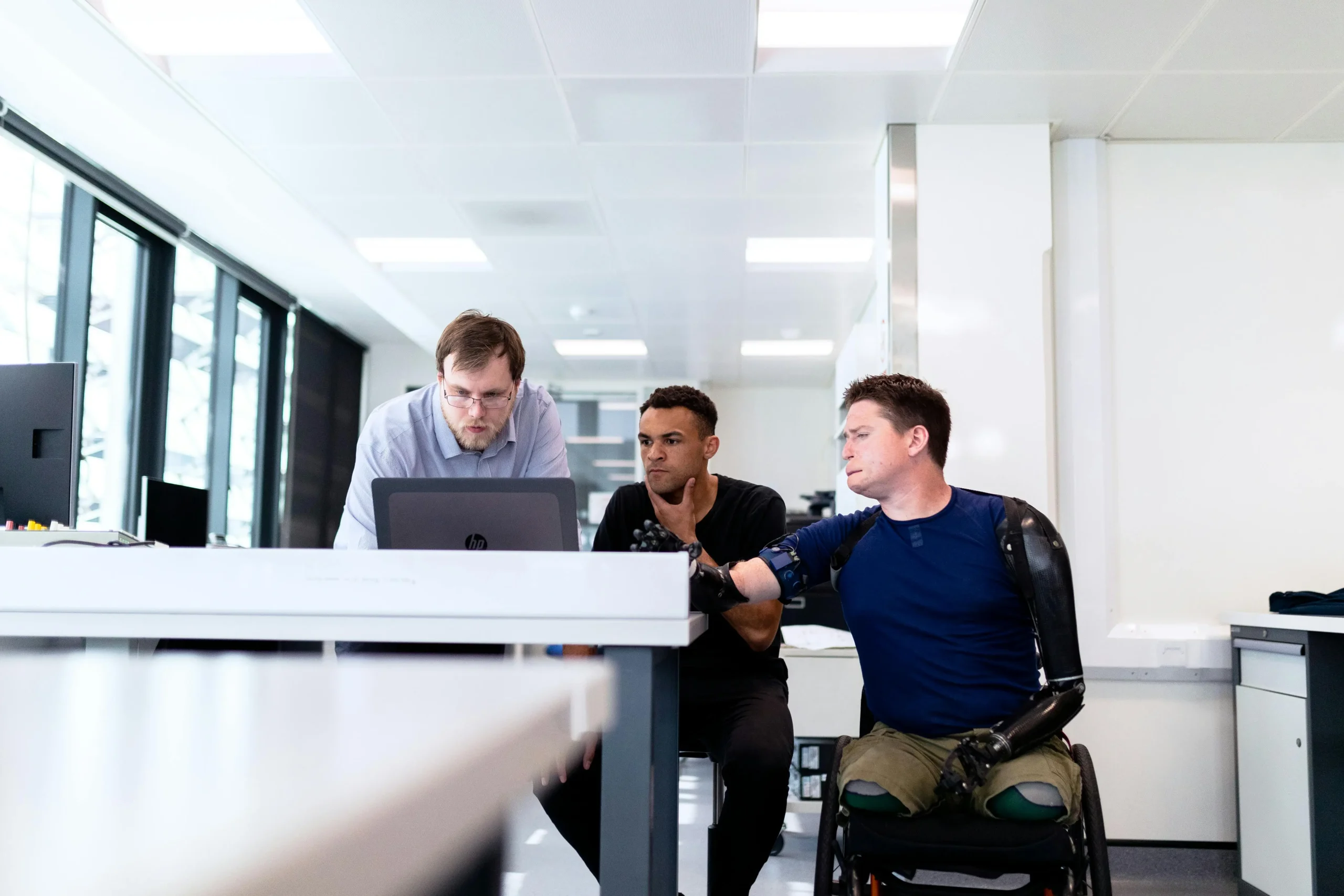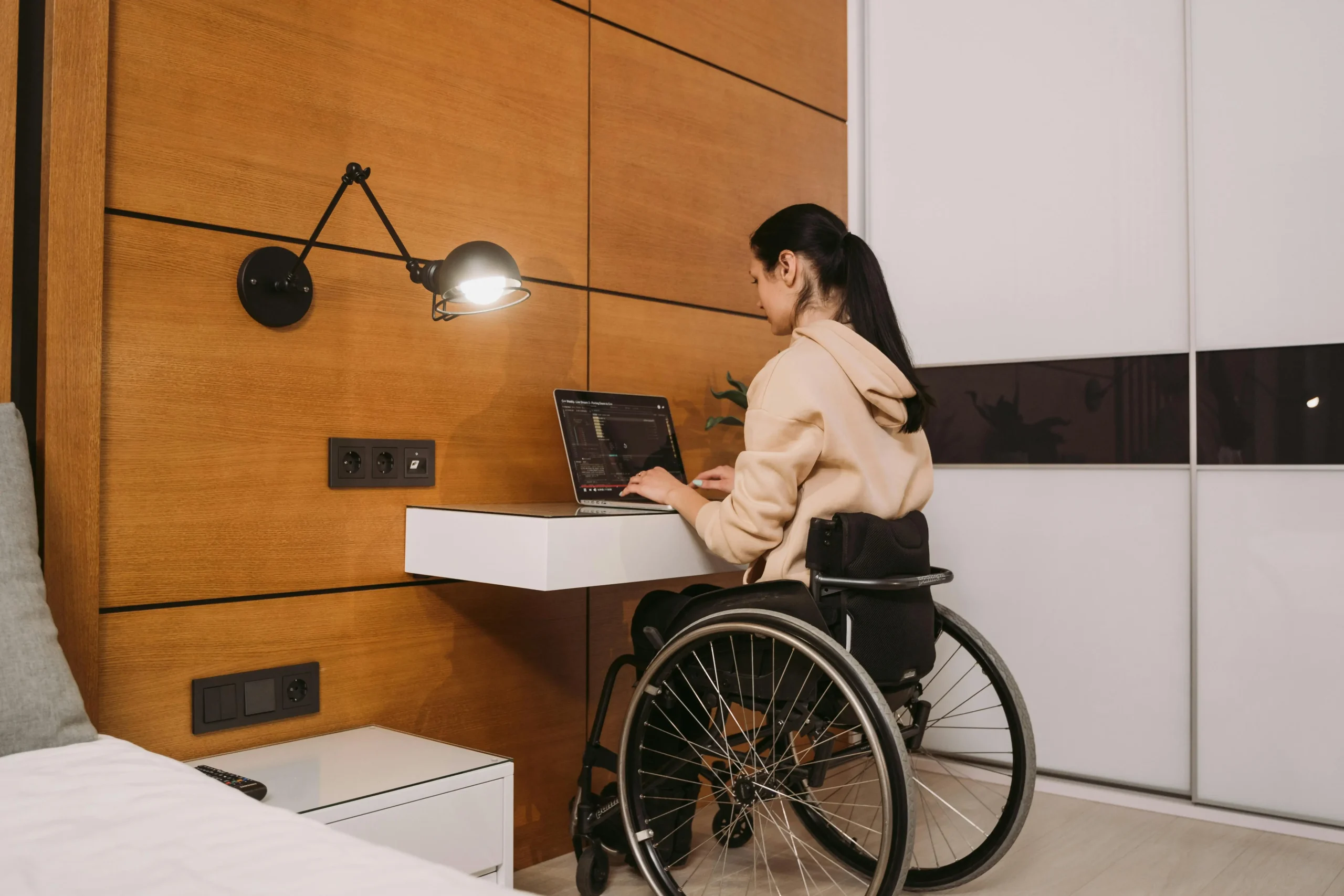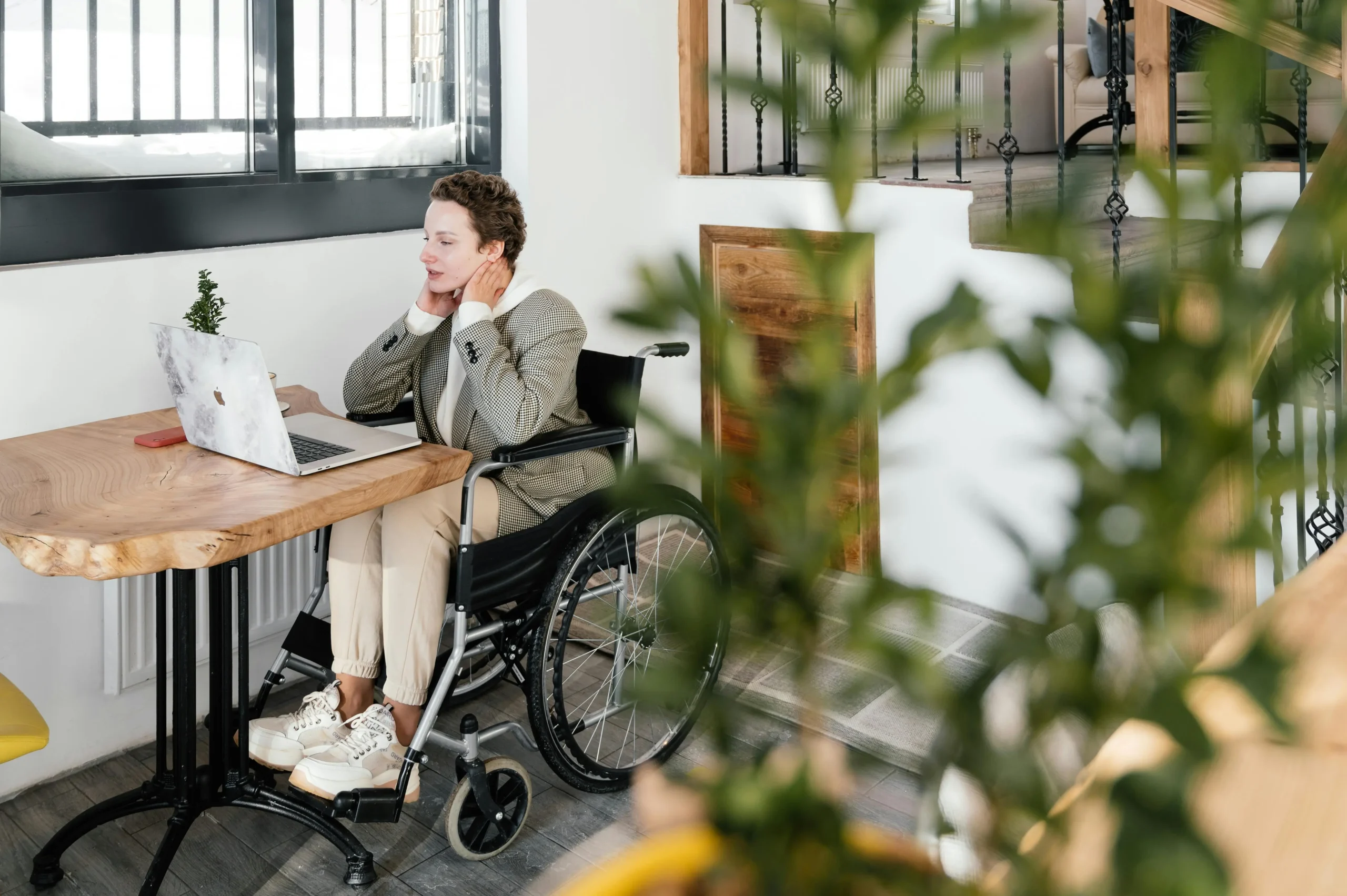Should I Self-Identify as a Person with a Disability?

In a world that strives for inclusivity and diversity, the topic of self-identifying as a person with a disability holds immense significance. This article delves into the thought-provoking question: “Should I self-identify as a person with a disability?” The exploration will encompass the reasons behind self-identification, the potential benefits and drawbacks, and the broader societal implications.
Understanding Self-Identification
Defining Self-Identification
Self-identification refers to the act of recognizing and acknowledging oneself as belonging to a particular group, in this case, individuals with disabilities. This acknowledgment can take various forms, ranging from personal reflection to public declaration.
Self-identification is an important and empowering part of being a disabled individual. It gives the individual more ownership over their identity and helps to build self-confidence. Recognizing yourself as belonging to a particular group can also provide much-needed peer support, since other members of that group may have similar experiences or share resources with each other.
The Complexity of Disability
Disability is a multifaceted concept, encompassing physical, cognitive, sensory, and mental health impairments. It’s essential to understand that disabilities are diverse and unique, making self-identification a deeply personal journey.
Disability is an individual experience, and no two people have the same needs or access requirements. It’s important to recognize that each person’s disability may affect them differently, even if they share a similar diagnosis. Everyone deserves to be treated with respect and dignity regarding their disability.
Reasons for Self-Identification
Fostering a Sense of Community
Self-identifying as a person with a disability can foster a sense of belonging to a larger community. This camaraderie can provide emotional support, shared experiences, and a platform to advocate for common interests.
Living with a disability can often be isolating. Self-identifying as someone with a disability, however, can open up access to a larger community of people who understand the unique experience of living with a disability and are there to offer support. It is through this camaraderie that individuals gain access to shared experiences and an opportunity to advocate for common interests.
Access to Resources and Accommodations
Self-identification can grant access to vital resources and accommodations tailored to one’s specific needs. Educational institutions and workplaces often offer assistance that can level the playing field, enabling individuals to thrive.
Self-identification is an important step to take in order to access the resources and accommodations that best meet one’s individual needs. Education and career institutions are increasingly offering services that can be tailored to an individual’s personal needs, allowing them to perform at their highest level.
Raising Awareness and Promoting Understanding
Publicly identifying as a person with a disability can help raise awareness and challenge misconceptions. By sharing their stories, individuals can contribute to dismantling stereotypes and fostering empathy.
Publicly identifying as a person with a disability has the power to create positive change. By opening up about their experiences, individuals can help to educate and inform society by bridging the gap between assumptions and actualities. This is incredibly important since it allows people to deeply understand the challenges faced by those living with disabilities, thus making way for more inclusive and accessible services.
Considerations and Drawbacks
Potential Stigma and Bias
One major concern is the potential stigma and bias that might accompany self-identification. Discrimination and judgment still persist, which could adversely affect opportunities and relationships. The potential for stigma and bias is an important concern when it comes to self-identification. It’s important to be aware of the fact that discrimination and judgment still exist, and these can lead to adverse effects on opportunities and relationships. It’s also important to remember that everyone has the right to identify as they choose without fear of prejudice or persecution.
Loss of Privacy
Publicly self-identifying can sometimes lead to an erosion of privacy. Individuals might find themselves subject to intrusive questions or unwarranted attention. Self-identifying publicly can have some uncomfortable consequences. People may be asked intrusive questions or receive unwanted attention, leading to an erosion of their privacy. It is important to consider the potential risks before deciding how open you want to be with your identity and personal information.
Navigating Self-Identity
The journey of self-identification can be complex. Some individuals might feel pressured to fit into preconceived notions of disability, leading to internal conflict. Navigating the journey of self-identification for individuals with disabilities can often be challenging. For some, this journey might involve feeling compelled to fit into certain preconceived expectations and ideas around their disability.
Societal Implications
Advancing Inclusivity
Collective self-identification can drive societal change by advocating for inclusivity, accessibility, and equal rights. It can prompt policy shifts and cultural transformations. Collective self-identification can often drive social progress and inspire meaningful changes within society. It’s an important tool for advocating inclusivity, accessibility, and equal rights that can lead to policy shifts and cultural transformations. This process requires a strong sense of solidarity among individuals who share similar experiences, interests, or values.
Challenging Norms
By openly identifying as disabled, individuals challenge societal norms and push for reevaluating what it means to be “able-bodied.” We no longer choose to see disability as something fixed and stagnant, but instead view it as a normal part of life. We must encourage the idea that individuals with disabilities can be seen and celebrated for more than their disability—they have strengths, passions, and dreams just like everyone else.
Conclusion
In the end, the decision to self-identify as a person with a disability is deeply personal and should be made with careful consideration. While self-identification can offer a sense of community, access to resources, and opportunities for advocacy, it also comes with potential challenges such as stigma and privacy concerns. Ultimately, the path to self-discovery and empowerment lies in embracing one’s identity on one’s terms.
Q. Can self-identifying as disabled impact my job prospects?
A. While self-identification can lead to access to accommodations, some employers might still hold biases. However, it’s important to remember that laws protect individuals from discrimination.
Q. How can I decide if self-identifying is right for me?
A. Reflect on your personal journey, goals, and comfort level. Seek advice from trusted friends, family, or professionals if needed.
Q. Are there legal implications to self-identifying as disabled
A. Self-identifying can provide legal protections and access to accommodations under laws such as the Americans with Disabilities Act (ADA).
Q. What if I don’t want to disclose my disability?
A. The decision to disclose is entirely up to you. Your privacy should be respected, and you should only share what you’re comfortable with.
Q. How can self-identification contribute to societal change
A. By openly sharing experiences, advocating for inclusivity, and challenging stereotypes, individuals can inspire broader shifts in societal attitudes and policies.













